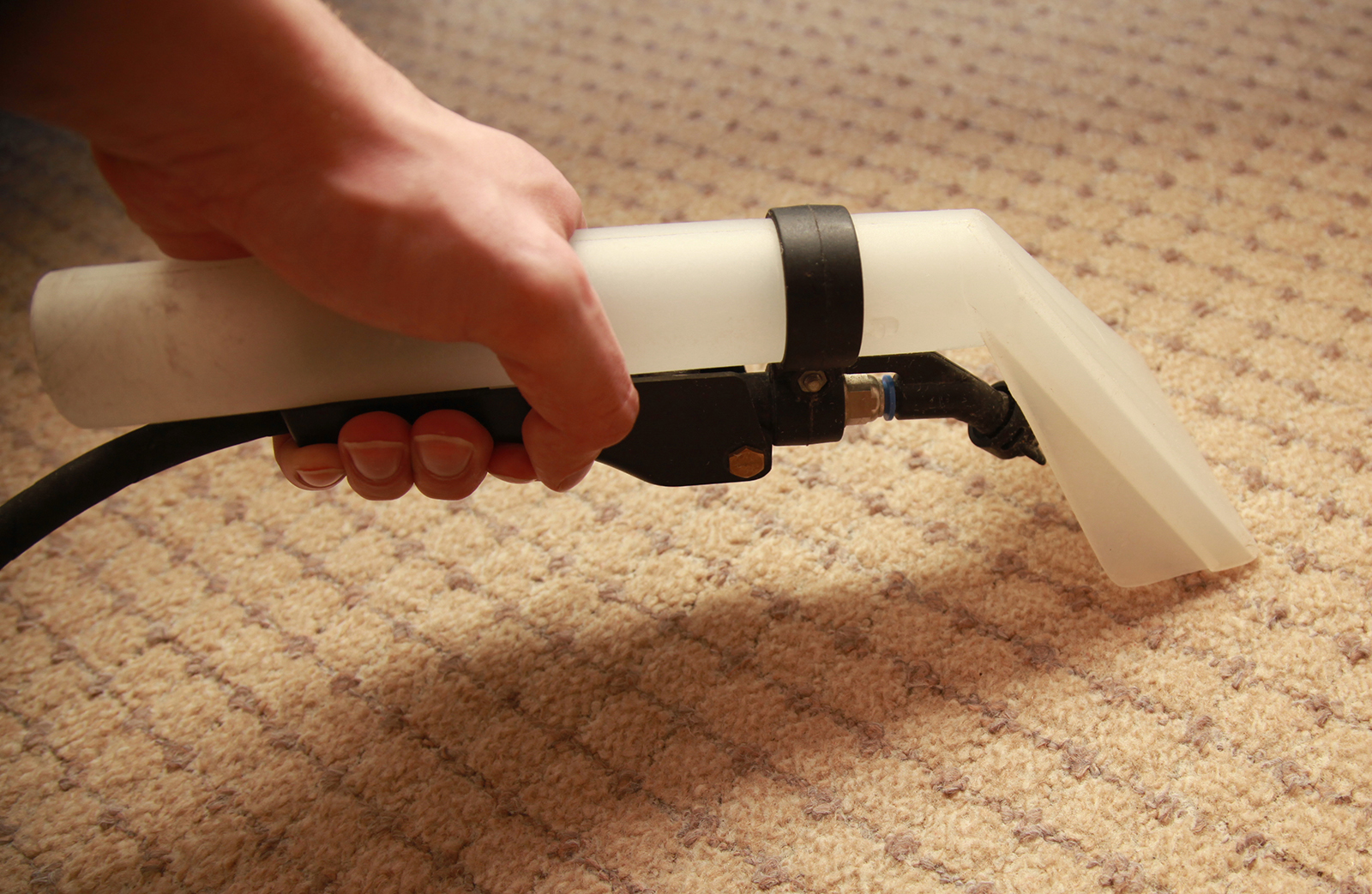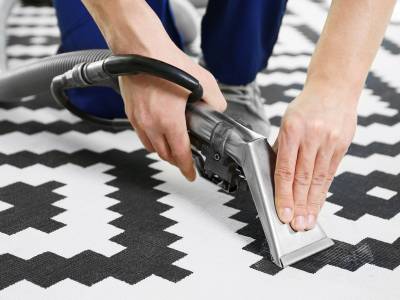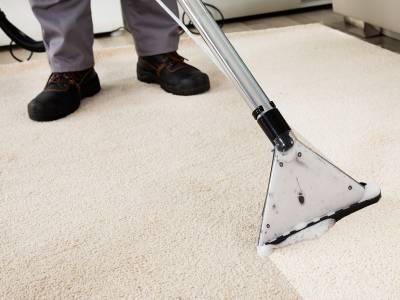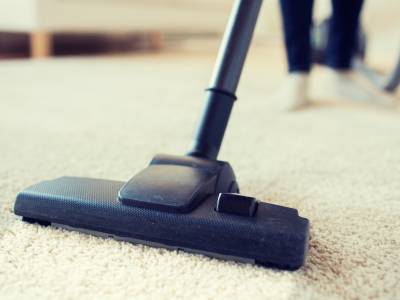What is the best way to clean carpet? There are four basic methods for cleaning carpet:
- Carpet Shampooing
- Dry Powder Method
- Bonnet Cleaning
- Low moisture
Carpet Shampoo Method
The shampoo method generates a deal of foam in the carpet, foam is allowed to dry, and the resulting residue attracts the soil and then the next day the residue and soil are vacuumed.
The most common ingredient in carpet shamppo is sodium lauryl sulfate. Many hair shampoos contain sodium lauryl sulfate or some similar wording. Sodium Lauryl Sulfate and its relatives exhibit a very high and very stable foam and are only fair detergents. The problem is that they dry to a soft, sticky residue which will cause resoiling.
Because of the resoiling problem, carpet shampoos will frequently also have an anti-resoiling additive such as a resin to reduce this resoiling tendency.
Because shampoos are actually very poor detergents and basically simply bury the dirt, they frequently also contain high levels of optical brighteners which take invisible ultraviolet light and convert it to visible light, thus making the carpet appear cleaner and brighter than it really is, for a while. It will eventually give the carpet a yellow cast and the yellow cannot be removed.
Two primary types of machines are used for this process:
- Cylindrical Foam
- Rotary Shampoo
The Cylindrical Foam Shampoo machine uses an air compressor to create dry foam before the foam is applied to the carpet and the carpet is then agitated with a revolving cylindrical brush which combs the foam through carpet pile. This method will leave dirt trapped in the carpet pile. Carpet must be thoroughly vacuumed before and after cleaning.
The Rotary Shampoo method uses an ordinary rotary floor machine (the same kind used for stripping wax), sprays shampoo onto the carpet from a dispensing tank and a rotary brush whips the detergent to a foam. Most carpet mills and carpet fiber producers discourage the use of rotary brushes on carpet because of the potential damage that can occur. Over wetting is common with this method which can cause jute straining, shrinkage and odor.
Shampoo methods are inferior due to poor cleaning plus resoiling problems. The rotary shampoo method can damage the carpet, especially cut pile (which is what most residential carpet is).
Carpet Absorbent Cleaners
In this method, a dry absorbent compound containing small amounts of water, detergent, and solvent, is sprinkled over carpet or worked into the carpet with a machine. This purpose of this cleaner is to attract and absorb soil. Mechanical agitation from a brush works the cleaner through the carpet.
These products usually contain an absorbent carrier, water, detergent and solvent. The theory is that the liquids dissolve the soil and this soil/detergent/solvent mixture is absorbed into the carrier and is then vacuumed up. They are often used with a detergent prespray in heavily soiled areas.
The absorbent cleaner most commonly is organic, but may also be polymers. The compound is supposed to absorb the dislodged soil and is then vacuumed away. Carpet must be thoroughly vacuumed before and after cleaning.
Very thorough vacuuming should be used to ensure that most of the carrier comes out of the carpet. With the extremely fine powder types, indoor air quality can be reduced. If a white powder starts appearing on shoes and cuffs of pants, too much was used and it was not thoroughly vacuumed up. A common problem is for this white powder to reappear after wet extraction cleaning.
This cleaning method has the advantage of no drying time for interim maintenance, since little water is used. This makes it a common maintenance cleaner.
Host®, Capture®, Love My Carpet®, Arm and Hammer® and Carpet Fresh® would be included in this category.
Bonnet Method / "Carbonated Cleaning"
Bonnet Shampooing is simply an adaptation of hard floor spray buffing to carpets.
This method consists of using of a rotary or oscillating brush adapted with a stiff brush or drive block designed to drive wet, damp or dry pads. The carpet can be sprayed with the cleaning solution and/or the pads can be soaked in the cleaning solution and squeezed lightly before placing the pad under the driving brush.
The maintenance brochure published by the world's largest carpet manufacturer, Shaw Industries, suggests not using this method, especially on cut pile, due to pile distortion and fiber damage. This method has very limited capability for soil removal and leaves much of the detergent in the pile since it employs no real extraction. As a result, rapid re-soiling often occurs. Another disadvantage is that the spinning bonnet may distort the fibers of cut pile carpet, fuzzing the pile and leaving distinct swirl marks.
Check with your carpet manufacturer because many leading carpet mills recommend against this method of cleaning.
Low Moisture / Extraction
This method is the cleaning method that nearly all carpet manufacturers and carpet fiber producers recommend.
This is the only cleaning method classified as "deep cleaning". All the others are considered "light surface cleaning" or "interim cleaning" because they are incapable of removing soil deep in the pile. Also, all other methods leave large amounts of cleaning agent in the carpet after cleaning.
The maintenance brochure published by the world's largest carpet manufacturer, Shaw Industries, recommends this method, because its own research indicates that it provides the best capability for cleaning carpet and rugs.
This carpet cleaning method is frequently called steam cleaning due to the fine spray of water used to force dirt out of the carpet which is sucked up by the vacuum slot immediately in front of the spray. Seldom is real live steam used, however. This process consists of spraying a solution of water and detergent into the carpet pile and recovering the water and soil with a powerful vacuum into a holding tank. Portable systems brought into a home are not only the safest for your carpets but they are also the most eco friendly.









